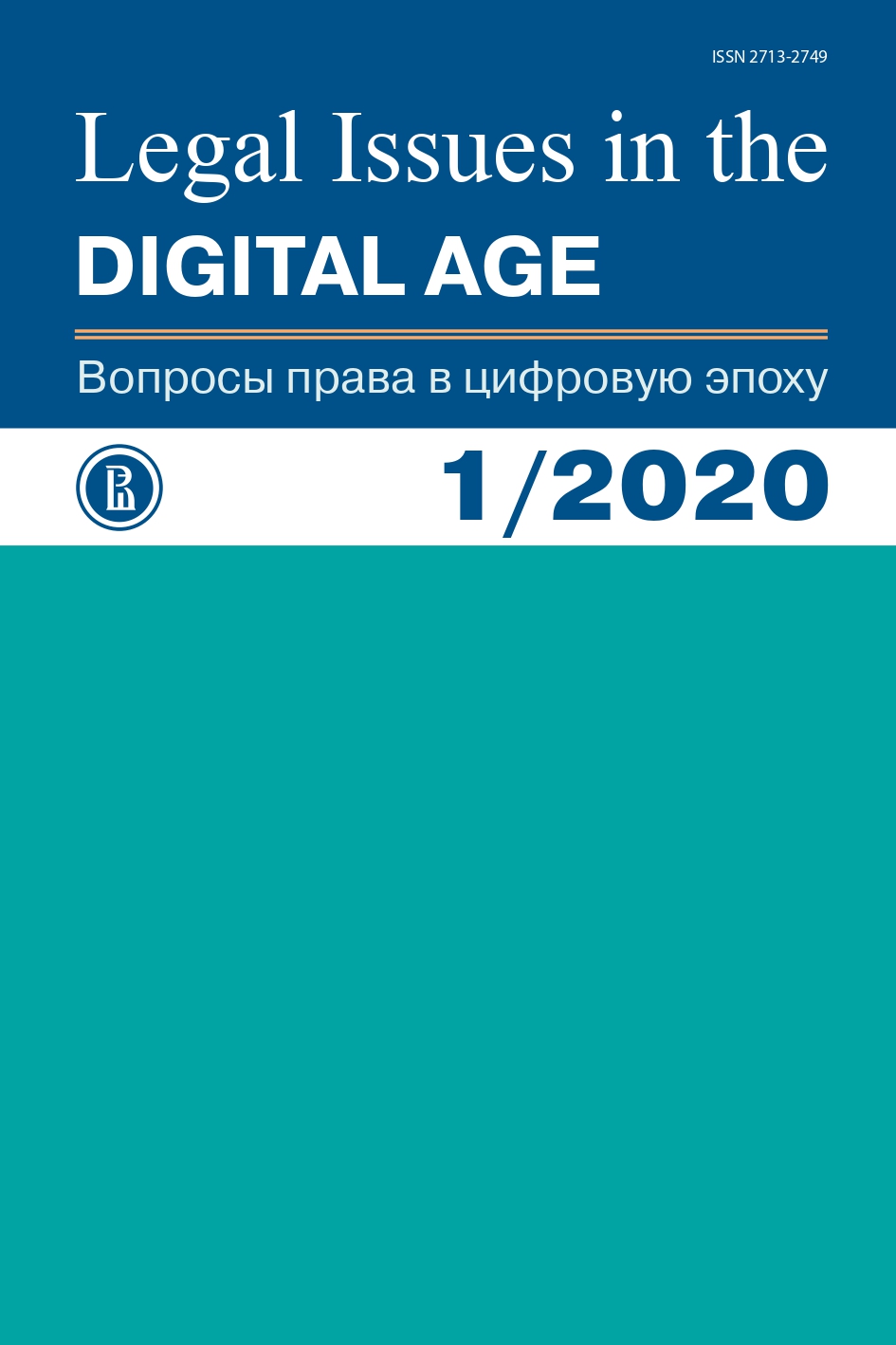The Voice and Speech Processing within Language Technology Applications: Perspective of the Russian Data Protection Law
Abstract
Language technology (LT) in its broad sense comprises speech technology, computational linguistics, and natural language processing technology. These technologies are expected to have great economic potential and a considerable impact on the everyday life of society. The development of LT fosters applications for artificial intelligence (AI) and broadens the horizon for its advancement. LT deals not only with written forms of linguistic expression but also extends to voice and speech. Voice excluding speech or its contents is a combination of unique physical patterns, such as vocal qualities, volume, speed, and certain other biometric data. Voice can provide medically relevant information, e.g. about a person’s mental state, stress level, etc., which is potentially sensitive medical data. Voice with inclusion of speech content can also include personal data (e.g. name, address, ID number, etc.). Consideration of voice and speech as personal data presents a range of legal vulnerabilities and challenges for developing and disseminating LT. This paper explores the extent to which the special regime used for personal data derived from voice and speech affects how it is processed and how it bears on the development and dissemination of LT. This investigation will identify legal vulnerabilities that arise in this connection, and its findings should be useful to both researchers and entrepreneurs in LT. The results of this study provide a basis for further research into LT and related legal issues concerning personal data in Russia.
References
Arkhipov V. and Naumov V. (2016) The legal definition of personal data in the regulatory environment of the Russian Federation: Between formal certainty and technological development. Computer Law & Security Review, no6, pp. 868–887.
Behrman A. (2017) Speech and voice science. San Diego: Plural publishing, p. 482.
Chang K. et al. (2011) AMMON: A speech analysis library for analyzing affect, stress, and mental health on mobile phones. Proceedings of Phone Sense. Available at: http://people.eecs.berkeley.edu/~jfc/papers/11/AMMON_phone-sense.pdf (accessed: 18.05.2020)
Clark A., Fox C., and Lappin S. (2013) The handbook of computational linguistics and natural language processing. Oxford: Wiley, p. 650.
Devlin J. et al. (2018) BERT: Pre-training of deep bidirectional transformers for language understanding. Available at: https://arxiv.org/pdf/1810.04805.pdf?source=post_elevate_sequence_page (accessed: 18.05.2020)
Docksey C. (2016) Four fundamental rights: Finding the balance, International Data Privacy Law, no 3, pp. 195–209.
Dutoit T. (1997) An introduction to text-to-speech synthesis. Dordrecht: Springer Science & Business Media, p. 275.
Furey E. & Blue J. (2018) She Knows Too Much — Voice Command Devices and Privacy. 29th Irish Signals and Systems Conference (ISSC), The Institute of Electrical and Electronics Engineers (IEEE), pp. 1–6.
Grave E. et al (2018) Learning word vectors for 157 languages. Available at: https://arxiv.org/pdf/1802.06893(accessed: 18.05.2020)
Hafen R. & Henry M. (2012) Speech information retrieval: A review. Multimedia systems, no 6, pp. 499–518.
Hijmans H. (2016) The European Union as guardian of internet privacy. Cham: Springer International, p. 564.
Holmes W. (2001) Speech synthesis and recognition. London: Taylor & Francis, p. 298.
Hungerland J. et al (2015) The digital economy.Strategy 2030 — Wealth and Life in the Next Generation. Berenberg Bank und Hamburgisches Welt Wirtschafts Institut. Available at: http://hdl.handle.net/10419/121322 (accessed: 18.05.2020)
Jain A. et al (2004) An Introduction to Biometric Recognition. The Institute of Electrical and Electronics Engineers (IEEE) Transactions on Circuits and Systems for Video Technology, no1, pp. 4–20.
Jents L. & Kelli A. (2014) Legal aspects of processing personal data in development and use of digital language resources: the Estonian perspective. Jurisprudencija, no 1,pp. 164–184.
Jobanputra N. et al (2008) Emerging security technologies for mobile user accesses. The electronic Journal on E-Commerce Tools and Applications. Available at: http://citeseerx.ist.psu.edu/viewdoc/download?doi=10.1.1.374.5082&rep=rep1&type=pdf (accessed: 18.05.2020)
Kelli A. et al (2018) Processing personal data without the consent of the data subject for the development and use of language resources. Selected papers from CLARIN Annual Conference, 2018. Linköping University Electronic Press. Available at: https://www.ep.liu.se/ecp/159/008/ecp18159008.pdf (accessed: 18.05.2020)
Kelli A. et al (2012) Copyright and Constitutional Aspects of Digital Language Resources. Juridica International, vol. 19, pp. 40–48.
Krivogin M. (2017) Peculiarities of Legal Regulating Biometric Personal Data. Law. Journal of the Higher School of Economics, no 2, pp. 80–89 (in Russian)
Mavrinskaya T.V. et al (2017) Anonymizing personal data and Big Data technology. Interactivnaya nauka, no 16, pp. 1–8 (in Russian)
Oostveen M. (2016) Identifiability and the applicability of data protection to big data. International Data Privacy Law, no 4, pp. 299–309.
Savelyev A. (2016) Russia’s new personal data localization regulations: A step forward or a self-imposed sanction? Computer Law & Security Review,no 1, pp. 128–145.
Soldatova V.I. (2020) Protection of personal data in applying digital technology. Lex Russica, no 2, pp. 33–43 (in Russian)
Vazhorova M.A. (2012) The relationship between the concepts of “information about private life” and “personal data”. Bulletin of the Saratov State Law Acad-emy, no 4, pp. 55–59 (in Russian)
Authors who publish with this journal agree to the Licensing, Copyright, Open Access and Repository Policy.










